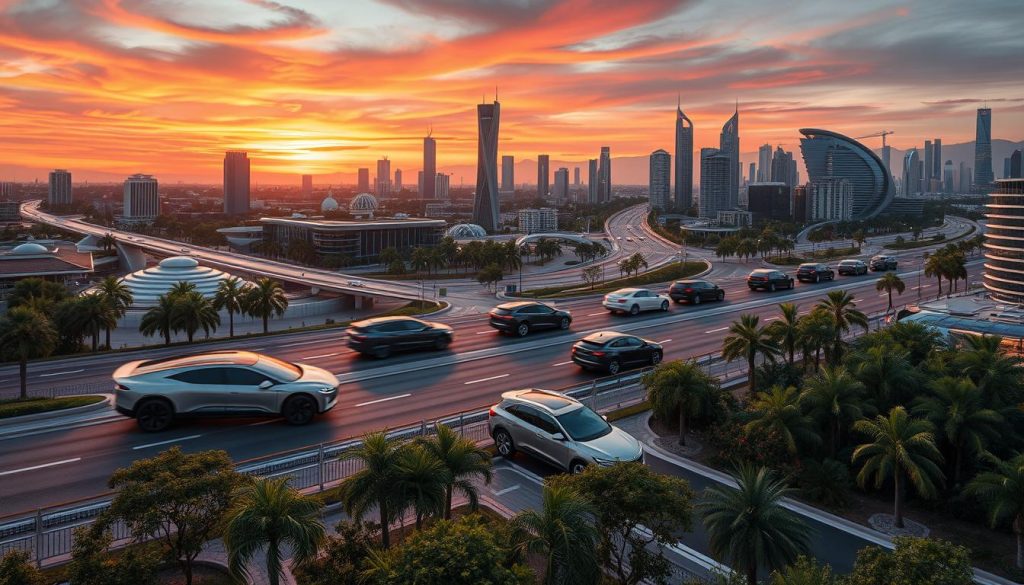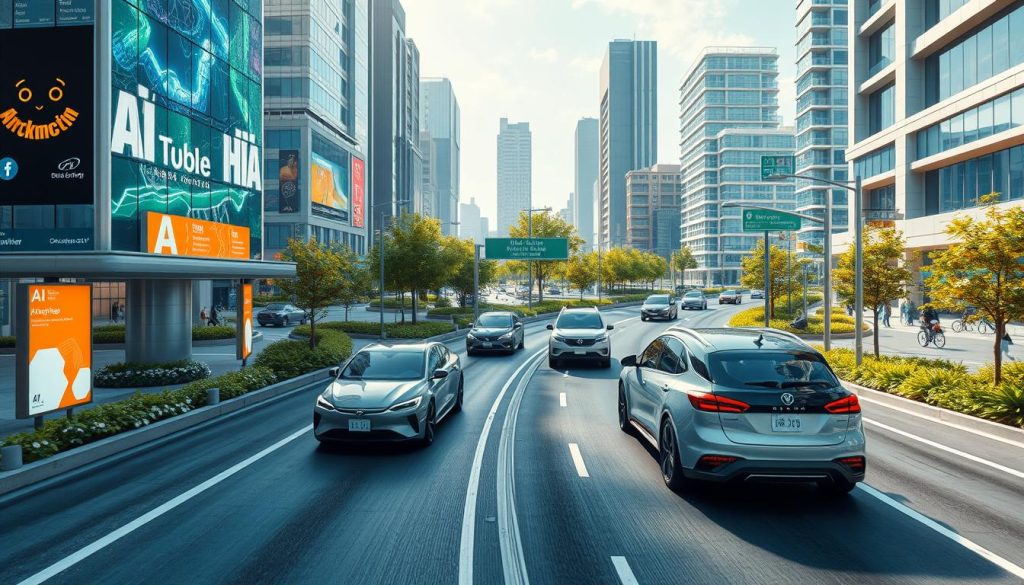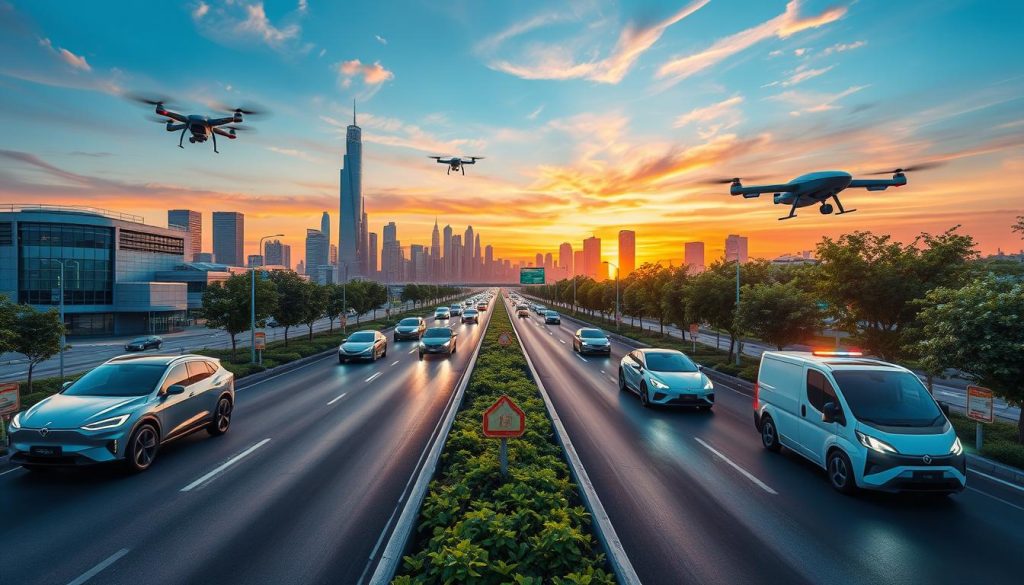The universe of transportation has changed a great deal by 2025. Independent vehicle innovation has had a major effect. It has changed how we utilize self-driving vehicles.
Thinking back, we perceive how far we’ve come. Advancements in independence, wellbeing, and client experience have been vital. These headways are making way for what’s next in 2025.
Large names like Waymo and Tesla are driving the way. They, along with traditional car makers, are showing us what’s possible. Studies from SAE International give us a clear picture of the market.
How about we investigate how these progressions are molding our future in transportation.

The Current State of Autonomous Vehicle Technology
Investigating independent vehicle innovation shows us how self-driving vehicles are changing the vehicle world. The General public of Car Designers (SAE) has levels of vehicle mechanization. These levels range from Level 0, no computerization, to Even out 5, full independence. Realizing these levels assists us with perceiving how far self-driving vehicles have come.
Understanding Self-Driving Cars
Self-driving vehicles use sensors and programming to move without a driver. They can see and respond to their environmental factors continuously. This tech intends to make streets more secure, cut down on traffic, and change how we move around urban communities. As this tech improves, so do the manners in which we utilize computerized vehicles.
Key Technologies Driving Progress
Several key technologies are pushing self-driving cars forward. These include:
- LIDAR: Uses laser beams to map out the car’s area.
- Computer Vision: Helps the car understand its environment, like obstacles and traffic lights.
- AI: Permits vehicles to get better at pursuing choices over the long haul.
These advances make self-driving vehicles more secure and more down to earth for day to day use.
Regulations and Safety Standards
Self-driving cars follow strict rules and safety standards. Bodies like the Public Expressway Traffic Wellbeing Organization (NHTSA) in the U.S. furthermore, the European Commission set these principles. They aim to keep people safe while encouraging new car tech. By following these rules, car makers help build trust with drivers.

The Evolution of Autonomous Vehicles in 2025
Anticipating 2025, we see colossal steps in man-made brainpower and man-made intelligence. These are key to making driverless cars better. They help change how people see and use these vehicles.
Breakthroughs in AI and Machine Learning
Organizations like Tesla and Baidu are driving the way. They utilize brilliant calculations and heaps of information to make vehicles more secure and better. Thanks to AI, cars can now:
- See and avoid obstacles better
- Make smarter decisions while driving
- Process data quickly for smooth travel
These changes mark a big leap in what driverless cars can do. They show how important AI is for the future of cars.
Impact on Driverless Vehicle Adoption
How fast people start using driverless cars depends on tech, public opinion, and money. Studies show more people are okay with the idea of automated cars. This change comes from:
- Seeing the cost benefits of automated rides
- Knowing AI makes cars safer
- Understanding how cars can help people with disabilities
Our look at surveys shows more people are ready for driverless cars. As tech gets better, so will acceptance. The move to driverless cars is more than tech; it’s a change in how we see travel.

Future of Transportation: Trends and Predictions
The future of transportation is set to change a lot because of new technology. Autonomous vehicles will change how cities work, leading to big talks about moving around in cities. We need to figure out how cities can change to make life better for everyone.
Shifts in Urban Mobility
Urban mobility is changing fast, thanks to autonomous vehicles. Cities are looking at new ways to handle this, like:
- Changing roads and transport systems for safety and better flow.
- Using smart traffic systems that work with real-time data.
- Supporting shared mobility services to go with public transport.
These changes could make our transport system more connected and efficient, meeting our new needs.
How Autonomous Vehicles Affect Public Transport
It’s critical to comprehend how self-driving vehicles will change public vehicle. They might bring:
- More access for people who can’t use public transport now.
- Less need for personal cars, making public transport more popular.
- More efficient running, saving money for transport services.
With more review and cooperating, we can disclose transport better and more maintainable.
Challenges and Opportunities Ahead
Looking forward, the possible destiny of self-driving vehicles is stacked up with the two hardships and entryways. Technical issues like sensor integration and machine learning are big hurdles. Also, societal concerns like job loss, ethical dilemmas, and cybersecurity risks will arise.
Yet, there are great chances for green technology and better efficiency. Self-driving vehicles could make traffic stream smoother, eliminating blockage and contamination. They might change how we plan cities and use public transport. Leaders in the field see a safer, more efficient future for us.
As we move forward with automated vehicles, we must keep things in balance. Working together with different groups can help solve problems and seize opportunities. This way, we’re not just getting ready for a new way to travel. We’re creating a safer, greener future. The path ahead is tough, but the benefits could change how we see travel every day.